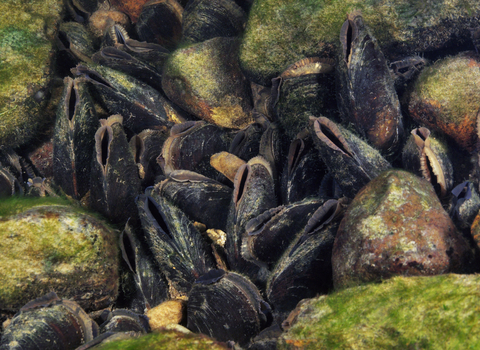
Freshwater pearl mussel ©Linda Pitkin/2020VISION
Freshwater pearl mussel
Freshwater pearl mussels spend their adult lives anchored to the river bed, filtering water through their gills and improving the quality of the water for other species.
Scientific name
Margaritifera margaritiferaWhen to see
January to DecemberTop facts
Category
Stats
Life span of over 100 years!Maximum size up to 17cm long
Listed as endangered by IUCN.
Protected in the UK under the Wildlife and Countryside Act, 1981.
Priority Species under the UK Post-2010 Biodiversity Framework.
Protected in the UK under the Wildlife and Countryside Act, 1981.
Priority Species under the UK Post-2010 Biodiversity Framework.
